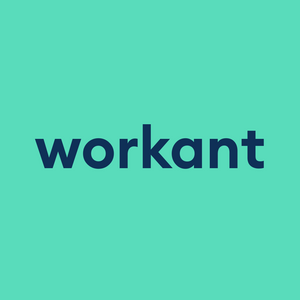According to Forrester’s report, only 41% of global software decision-makers say they’re satisfied with their current HR management software products, while 56% are looking at other options. Stay ahead of the game and ensure that you choose the correct HR software to save yourself time, money, and stress in the future.
What is HR software?
HR software, as defined by Oracle, is “any type of tech system that is developed with human resources in mind, which they use to manage employees,” and is often created to centralize, automate, and optimize many or all of your HR processes within a single platform.
Within the current nexus of enterprise (link to future of work post), robust and intelligent HR software systems are especially instrumental to the success of almost any business, whether a small retail business, a massive public finance company, or something in between.
They provide business owners and HR professionals with novel abilities, streamlined management capacities, and optimized decision-making capabilities resulting from deeper insights into an organization’s workforce.
Types of HR software
Human Resource Information Systems (HRIS)
Technically a type of HRMS (although the two are often referred to interchangeably), which focuses more closely on data & information and is characterized as more basic than HRMS or HCM systems. This includes the narrowest range of features but offers many capacities, such as employee data management, HR task standardization, and reporting/record-keeping.
Human Resource Management System (HRMS)
Usually offers more than HRIS and is adapted more to the modern workforce. It includes IT and HR management technologies, focuses on various business aspects, and incorporates additional qualitative information not found in HRIS.
Human Capital Management (HCM) System
The most comprehensive type of HR framework, including automated, intuitive, and data-driven software features & capabilities streamlining processes throughout your business. It usually includes all the elements in an HRIS or HRMS and can also feature AI, digital assistants, predictive algorithms, and intelligent solutions. It’s typically cloud-based and allows for more strategic planning, optimizes training & development, expanded opportunities for process improvement across the board, and deeper insights into the workforce.
Key features and capabilities
There is also software that addresses specific aspects within HR by performing only certain categories of activities. The expansion of HR software features is something businesses within most industries should capitalize on. Failing to incorporate intuitive tech or highly-developed data collection/analysis elements would be a mistake.
These are some features commonly found in overarching HRIS, HRM, or HCM frameworks or managed by a more specific and less comprehensive HR software system:
● Benefits administration
● Payroll management
● Time tracking and leave entitlement
● Employee data & documentation
● HR analytics
● Performance evaluation
● Recruitment & hiring (including applicant tracking & onboarding systems)
● Learning management (training & development)
● Scheduling
● Analytics & data management
● Employee engagement & well-being management (one of the fastest increasing aspects)
Due to the many advances in tech human resources throughout the last few decades, many HR software programs are cloud-based or defined as software-as-a-service (SaaS). These third-party systems are accessed from the internet (on a browser or mobile app) and paid for on a subscription basis.
Why use HR software?
The global human capital management software market continues to grow consistently, as it's projected to grow from $30.8 billion in 2019 to $33.04 billion in 2024. And as Statista predicts, the annual revenue of HR tech is estimated to increase to 90 billion U.S. dollars by 2025.
The fast-growing speed of this market implores us to digitize, streamline, and get on board with HR tech. All intelligent businesspeople understand the importance of evolving with the industry. Adopting the right HR software for your specific organization is one of the most essential activities for developing a forward-thinking and effective HR plan that adapts your business to the modern HR industry.
11 benefits of HR software
- A better understanding of employee engagement, performance, and well-being levels.
- Increased organization-wide communication and teamwork capacities, especially for remote or hybrid teams.
- Much more access to metrics, analytics foundations, and important employee datasets.
- A wider range of information aiding with process improvement and decision-making.
- The automation of tedious business activities decreasing time waste and error.
- The ability to develop better risk management practices.
- The simplification and streamlining of day-to-day processes & procedures.
- Improved and more efficient project management & workflow capacities.
- Access to innovative AI, predictive, and data-driven programs that allow businesses to better capitalize on the current state of global enterprise.
- Decreased spending and increased savings across the board.
- Better oversight regarding compliance.
A 7-step process for choosing the perfect HR software
The continued evolution of HR software pushes us to make strategic decisions regarding which software to choose. Follow these straightforward steps for selecting the best HR software for your business
- Create a great software-choosing team.
- With your team, pinpoint overarching organizational and specific HR needs.
- Determine which features can best fulfill those needs, help your organization progress, and decide which features are top priorities.
- Research HR software systems and vendors while incorporating all the tools at your disposal.
- Compare, evaluate, and consider certain criteria while weighing your options:
○ Ask about accompanying technical & customer support services, limitations, and conditions.
○ Consider customization, scalability, and mobility.
○ Determine utility by confirming that available features will work for your specific needs, cover every base, and provide optimal benefit.
○ Ask which elements are included as standard and which come with an extra fee.
○ Consider ease-of-use and cross-channel adaptability.
○ Ensure that streamlined integrations and the connectivity you need are possible.
○ Ask about data protection, security, and storage practices.
○ Consider pricing (including subscription or purchase costs, additional fees, maintenance costs, etc.) and determine the projected ROI. - Try it out by signing up for a free trial (or ask about contract lengths and/or money-back guarantees).
- Evaluate the trial’s success using HR analytics and team discussions before making a final decision.
Conclusion
The time to begin using intelligent HR software or updating your current system is now. Use the steps and strategies we outlined to choose the best HR software for your needs, and check out companies like Workant that provide 30 days of free HR software use. Register for our free trial and start using our powerful platform today.

